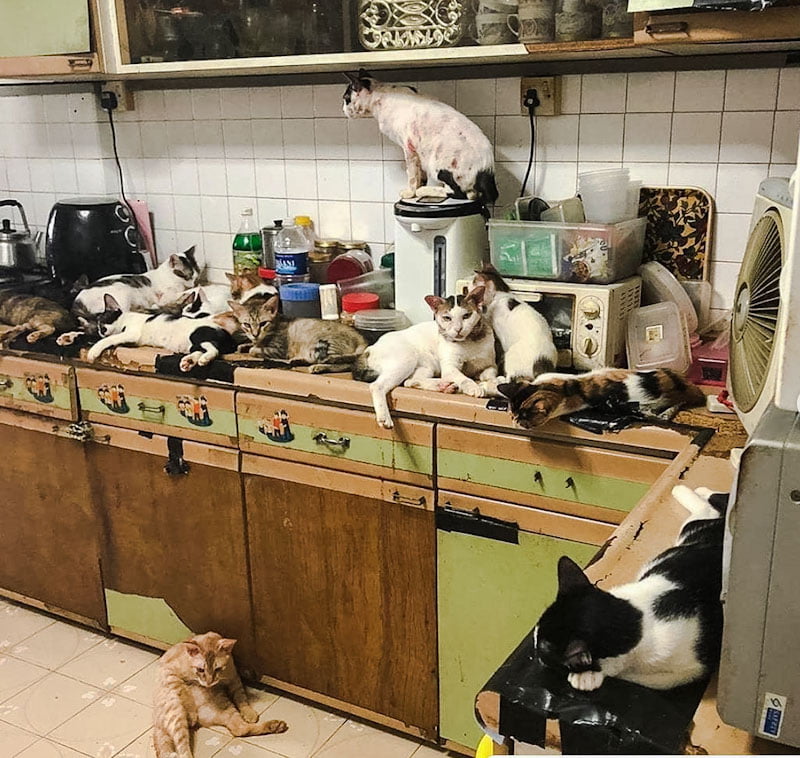Health
Urea
If cats and people are constantly inhaling ammonia gas in cat hoarding homes how does this impact health?
In homes with excessive cat urine build-up, like in severe cat hoarding situations, constant inhalation of ammonia gas poses serious health risks for both people and cats. Ammonia is a toxic gas that can irritate and damage the respiratory system and other organs when inhaled over long periods, especially at higher concentrations. Here’s how it impacts health:
1. Respiratory Issues
- People: Ammonia exposure irritates the respiratory tract, causing coughing, wheezing, shortness of breath, and burning sensations in the nose, throat, and lungs. Prolonged exposure can lead to chronic bronchitis and worsen existing respiratory conditions like asthma or COPD.
- Cats: Cats, with their sensitive respiratory systems, are highly susceptible to the effects of ammonia. Exposure can lead to respiratory infections, asthma, and bronchitis. Cats may also exhibit coughing, sneezing, and nasal discharge.
2. Eye and Skin Irritation
- People: Ammonia exposure can cause burning, itching, or redness in the eyes, as well as skin irritation if there’s contact with urine-soaked surfaces. Chronic exposure may worsen these effects, leading to persistent eye inflammation.
- Cats: Cats may also experience eye irritation, leading to conjunctivitis and other eye infections. Their skin can become inflamed, particularly on the paws if they’re frequently stepping in soiled litter.
3. Neurological and Psychological Effects
- People: In severe cases, prolonged high-level exposure to ammonia has been linked to symptoms like dizziness, headache, confusion, and overall cognitive impairment. Anxiety, stress, and depression are also common among individuals in hoarding environments due to the overwhelming conditions.
- Cats: High ammonia levels can cause stress in cats, leading to behavioral issues, and potentially affecting their neurological health, causing lethargy or disorientation.
4. Damage to the Immune System
- People and Cats: Constant exposure to ammonia can weaken the immune system, making both people and cats more susceptible to infections. This is particularly dangerous in a hoarding situation where sanitation is poor, and there’s a higher risk of bacterial and viral spread among animals and people.
5. Potential Long-Term Organ Damage
- People and Cats: Over time, severe and prolonged ammonia inhalation can damage the liver, kidneys, and lungs. In the worst cases, it can contribute to irreversible lung damage and kidney issues.
In severe hoarding situations, clean-up and remediation, including proper ventilation and often professional decontamination, are essential for restoring a healthy environment. For people and animals already





